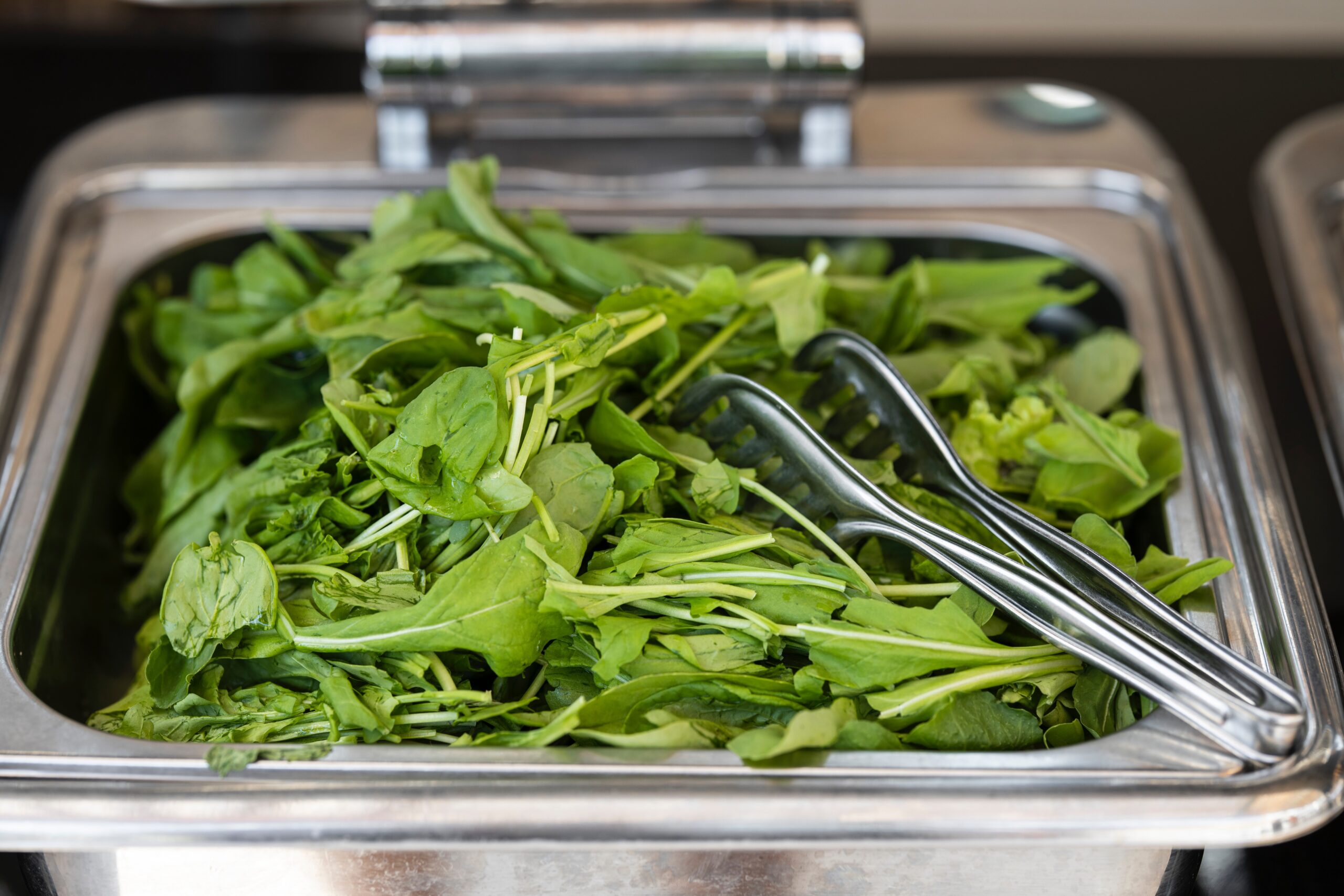Healthy nutrition – what affects digestion and what helps it
Do you usually suffer from abdominal pain and other digestive problems after eating? It is most likely not a coincidence. In many cases, unhealthy diets can directly affect the digestive tract and trigger bothersome symptoms. It is extremely uncomfortable for those affected, but there is an opportunity to recover: Diet can be influenced. What should you consider in your diet to avoid gastrointestinal discomfort? We will explain what to eat so that you avoid stomach pains, heartburn, and other problems as well as how to lighten digestion.

Why you can experience abdominal pain after eating.
As soon as you finish enjoying that delicious pizza, the first emissary of annoying abdominal pain appears. Many people suffer from gastrointestinal upsets due to their diet. Because? The explanation is simple: There are two reasons why the food you eat can cause difficulties in your stomach and intestines and affect your digestive health.
– The digestive tract tries to get rid of foods to which it is sensitive as quickly as possible. Gastric nerves, for example, react sensitively to spoiled or incompatible foods, and food transportation is accelerated, resulting in abdominal pain and cramps after eating, as well as nausea and diarrhea.
– On the other hand, food that is difficult to digest, such as that which is high in fat, requires great effort and generally spends more time in the stomach and intestine. During the decomposition processes, large amounts of gas are produced that result in inflammation, abdominal pain, and a feeling of fullness that makes life difficult for those affected.
The resulting stomach problems can occur either by themselves or in connection with other disorders or diseases of the digestive tract. For that reason, nutrition and stomach health are two issues that go hand in hand. There are diseases with an underlying organic diagnosis and functional gastrointestinal disorders (FGIDs), where there is a diagnosed underlying cause. Your diet can usually trigger gastrointestinal symptoms as well.
Gastrointestinal diseases
They differ from disorders of the gastrointestinal tract in that there is a diagnosis of underlying organic disease;
For example:
– Lactose, gluten, or fructose intolerance
– Gastritis
– stomach ulcers
– Gastrointestinal tract infections
Functional Gastrointestinal Disorders (FGID)
In functional gastrointestinal disorders (FGIDs) there are no organic causes that can be identified as responsible for the symptoms. However, they can be very unpleasant and greatly affect daily life and stomach function; For example:
– Irritable stomach/functional dyspepsia (FD)
A series of discomforts that affect the upper region of the abdomen. There are multiple underlying causes that still need to be clarified. Functional dyspepsia occurs in conjunction with other digestive disorders such as IBS. Symptoms include a feeling of fullness, early satiety, and pain in the upper abdomen.
– Irritable Bowel Syndrome (IBS)
The discomfort is usually related to the lower part of the gastrointestinal tract. Common complaints include abdominal pain, bloating, and bloating, diarrhea, or constipation. It is believed that the cause is in the alteration of the movements of the intestinal musculature and the hypersensitivity of the nerves of the intestines.
The following symptoms also characterize the above disorders:
– Abdominal cramps
Spasmodic or cramp-like pain in the stomach, but without a specific location
– Nausea
The urge to vomit without expelling the stomach contents
– Stomachache
The pain is usually located on the left side of the trunk, under the diaphragm.
– Abdominal pain
Pain under the sternum.
– Inflammation
The sensation is similar to food engorgement, but without having previously consumed food
– Abdominal pressure
A woman in a blue shirt is in the kitchen happily cutting herbs. There is a stove behind it.
Depending on how sensitive your stomach nerves are, it can be a feeling of fullness or severe pain.
Eating habits can trigger symptoms of functional disorders, so an adjustment can rid patients of symptoms such as abdominal pain. Nutrition and stomach health are directly related. Digestive health depends, in large part, on eating a healthy and balanced diet, which is good for general health.
What to eat in cases of abdominal pain
There are several dishes that bring with them gastrointestinal symptoms and therefore should be avoided. You can also try a lighter diet and smaller meals to see how your stomach responds. Consult a doctor about any changes to your diet.

Vegetables that are kind to the stomach are carrots, squash, broccoli, and peas. In general, ripe fruits such as apples or bananas are also well tolerated.
By boiling food, you not only preserve as many nutrients as possible but also relieve your stomach and intestines. In the same way, you have to take the time necessary to chew slowly and thus reduce the work of the stomach.
Why is healthy nutrition important for digestive wellness and what foods are good for it?
The way we live greatly affects our health. A conscious lifestyle, physical activity, and a healthy diet can have a positive effect on health and prevent disease. A balanced diet is the starting point for regular digestion. People usually eat all kinds of things, desserts, flour, greasy sausages, and fried sandwiches, before trying healthy food. For example, if the food is low in fiber, it can cause constipation. Normally we only notice the importance of good digestion when the intestine begins to bother us and show us symptoms such as nausea, flatulence, or heartburn.
What is a healthy diet for the stomach?
The bacteria in the intestines are important for health. There are foods that can stimulate intestinal flora and foods that not only do the opposite but can even be harmful.

The following nutrients serve your intestinal flora:
Dietary fiber
Dietary fiber is divided into soluble and insoluble in water. The soluble form of dietary fiber is found mainly in legumes such as beans, peas, or soybeans, and in fruits such as apricots, berries, raisins, vegetables, oat bran, and barley. The insoluble form is found mainly in whole wheat products, vegetables like carrots and tomatoes, fruits like apples and bananas, nuts, and seeds.
A mixture of both is recommended since it serves as “food” and support for intestinal bacteria.
prebiotics
Prebiotics are a type of food component made up of non-digestible carbohydrate fiber. They serve the intestinal bacteria as food and thus help to keep the intestinal flora healthy. Some good sources of prebiotics are raw endive, artichoke, bananas, and high-fiber foods like rye.
probiotics
Unlike prebiotics, probiotics are live microorganisms. They help process food in the stomach. In experimental studies, some probiotics showed potential as regulators of gastrointestinal nerve pain sensation in IBS patients.
Researchers are still trying to determine which ones work for certain ailments, but early results are promising: “Lactobacillus,” found in yogurt and other fermented foods, can help with diarrhea, while bifidobacteria, found in Dairy products help alleviate the symptoms of Irritable Bowel Syndrome (IBS) and some other conditions.
Two men are sitting on a log in the open air and talking animatedly. There are more fallen logs behind them.
Foods to be careful with
There are foods that do not necessarily harm the intestinal flora but do not benefit it either. In general, you should limit your intake of the following nutrients:
Foods with a possible effect on the stomach
We’re talking convenience store foods, candy bars, smoked and cured meats. The salts used in these processed foods can irritate the gastrointestinal mucosa. This is what we mean when we say that nutrition and stomach health are directly related.
FODMAPs
Short-chain sugars are not well absorbed in the small intestine but are rapidly fermented by the gut microbiome. Since these carbohydrates carry more water to the intestine, people with IBS may experience more gas, bloating, and diarrhea after eating them. If you suffer from irritable bowel, it may be worth considering a short-term FODMAP diet with your doctor.
Food with a bad reputation
bad fats
They are saturated fat acids, such as those found in butter, frying fat, lard, or coconut oil. There is a causal relationship between increased fat intake and heart problems.
White flour
We find it in our favorite desserts, such as cakes, sweets, croissants, and white bread. These foods are low in dietary fiber, which is good for stomach bacteria.
convenience store food
Processed foods often contain hard fats, hidden sugars, and many additives that are heavy on the gut and immune system.
A woman in an apron and a man are standing in the kitchen and smiling.
Healthy nutrition? It feels good and it tastes good!
As long as the diet is balanced and well combined, it is good for you. If your food is rich in fiber and cooked with ingredients high in vitamins and minerals, you are already on your way to improving your digestion and well-being!
It is very important to be versatile. A healthy diet does not mean eating only fruits and vegetables. Give priority to vegetables, but remember to change the ingredients from time to time. This guarantees a balanced and healthy diet.
Also, when including carbohydrates such as bread, pasta, or rice, you have to focus on making them integral. This increases the amount of fiber in your diet (see above).
Similarly, try to choose your fats consciously and use vegetable fats, such as canola oil. Try to avoid hidden fats and consume sugar and salt in moderation and you will improve your digestive health.
Here are a couple of easily digestible ingredient suggestions for a healthy diet:
– Wheat risotto with paprika, zucchini, and steamed arugula.
– Bean salad with roasted chicken
– Salmon with corn salad and steamed beets
Do yourself a favor and improve your digestion by eating the following:
– Pineapples
– Apples
– Artichokes
– Avocados
– Bananas
– Potatoes
– Acidified dairy products
– Fennel
Take your time and make the most of healthy nutrition
To control some digestive problems and increase the well-being of the digestive system, in addition to the aforementioned nutrition suggestions, it is necessary to reduce stress and eat regularly without time pressure and with sufficient fluid intake. Try to incorporate the following tips into your daily life:
– Drink enough fluids
– Eat in a balanced way
– Chew slow
– Establish rhythms and routines
– move enough
A first step in nutritional support
However, unhealthy eating habits in combination with a lack of physical activity can trigger symptoms such as abdominal pain and atypical bowel habits (nausea, heartburn…). Changing these factors can result in a considerable improvement in the quality of life and productivity of patients. To help you with the first step towards a healthier stomach, we have compiled the following information:
It includes data on the different food groups, their effect on digestion, and how they influence irritable bowel symptoms. It will help you with a sample meal plan for a week, an overview of fiber content by type of food, and a food pyramid, which you can use to create your own weekly meal plan.

